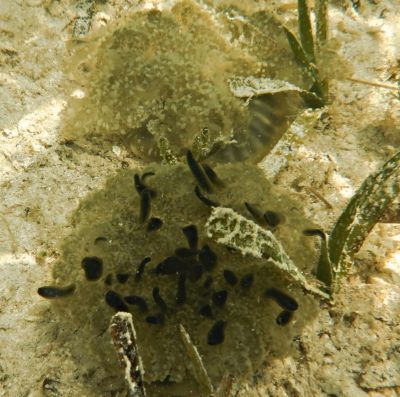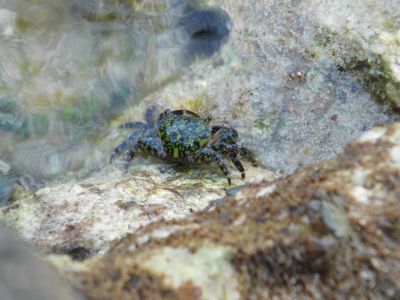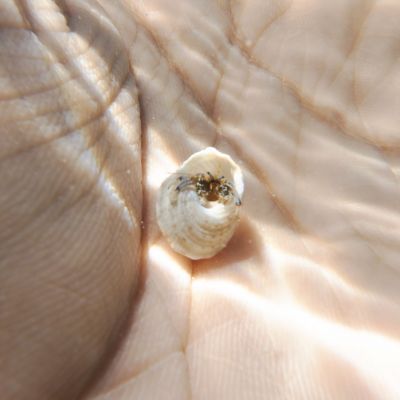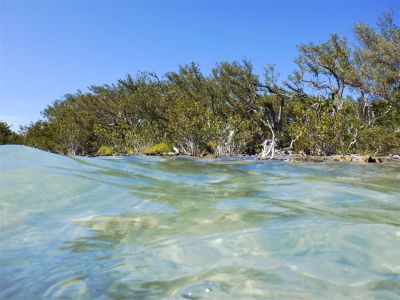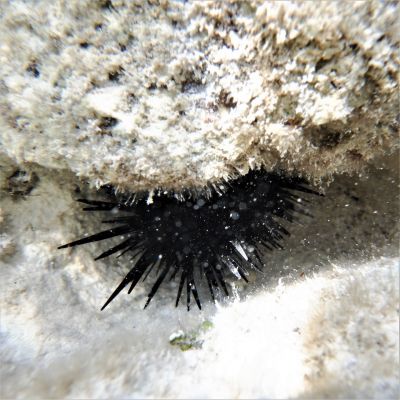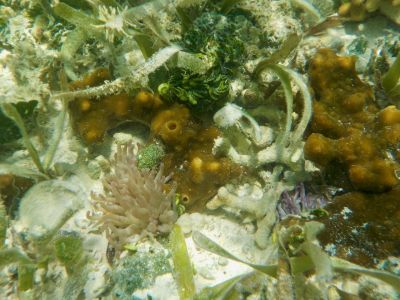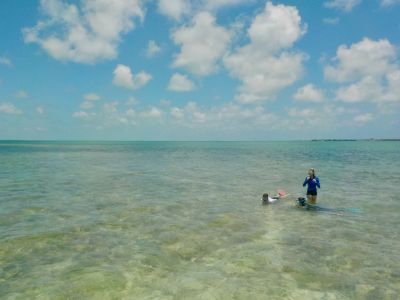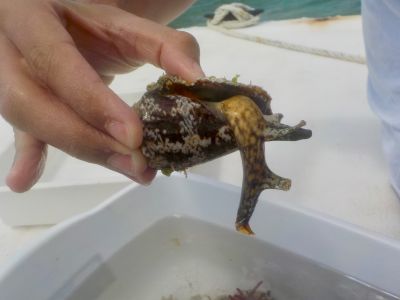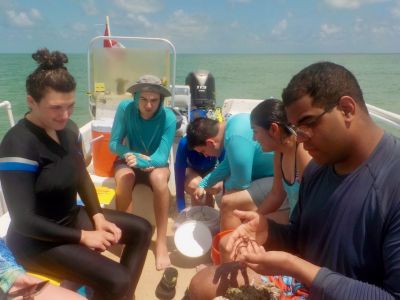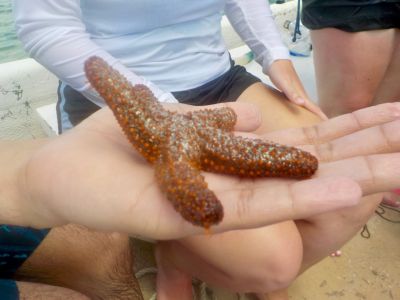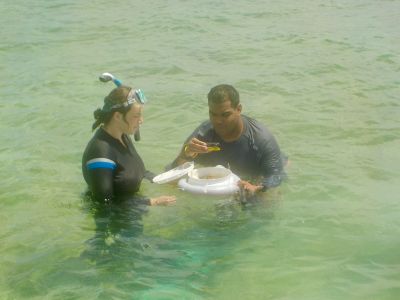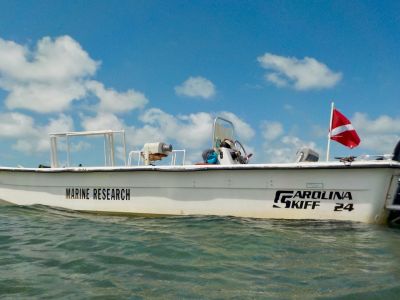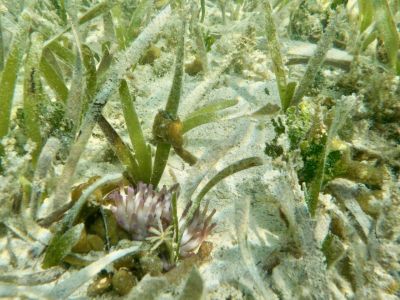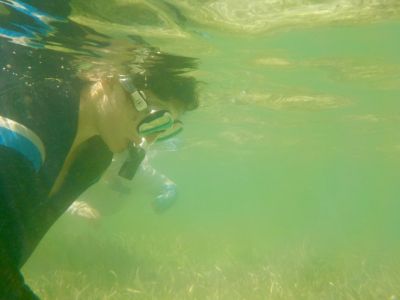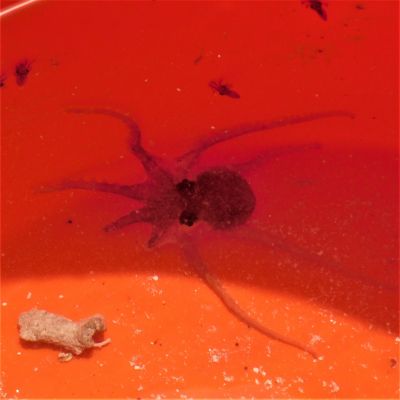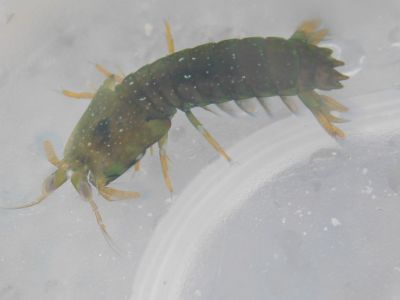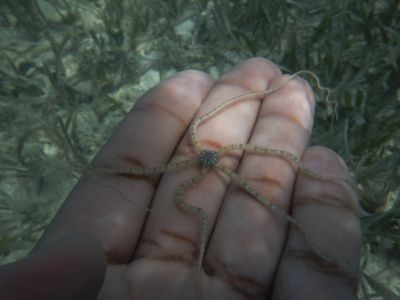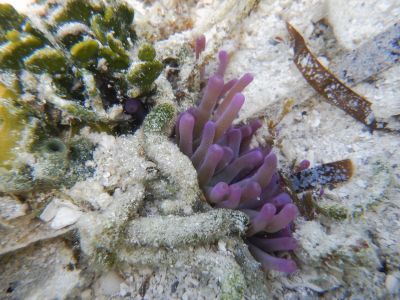Wednesday May 5, 2021
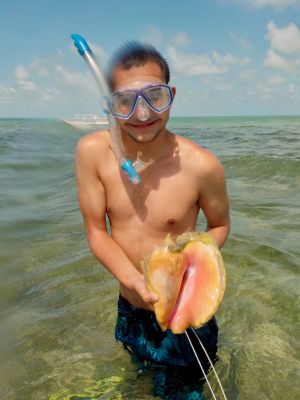
Wednesday morning started like the others sunny and bright. Today’s morning lecture greeted us with the challenge of creating the complex food web of the epipelagic zone only using a brief outline and an article we read the night before. The epipelagic zone is the area at the surface of the ocean where the light can reach. Professor Sensenig went over the history and classification of plankton. We learned that many creatures, including sunfish, fall into a category of plankton. Copepods are a key creature in sustaining this system, being a major food source of many other plankton.
When our lecture was finished our real work began. The group boarded the boat with our snorkel gear and our packed lunches in hand, ready to face our day trip to Old Dan Bank. While there, Ryan proposed a competition between groups to locate any new species we haven’t located yet. People quickly hopped in looking for anything new. After about an hour everyone gathered on the boat to identify what we found. There was a nice variety ranging from the smallest invertebrates, such as crabs and snails, to something larger i.e. a queen conch.
After identification everyone ate their lunches and got back to work solving some kinks in their methods for their final research projects that will be completed in the fall. Some people started with looking into the seagrass beds for epiphytes and crabs. While others observed the areas around boat scars; marks left by propellers going through the Old Dan Bank.
On the way back we conducted a couple more labs. The first one tied into the lecture looking at plankton. Using plankton nets we towed behind the boat, we collected microscopic plankton in the water. We used both a coarse and fine net to collect different size of plankton. We stored the collected samples in jars to be looked at under a microscope, which we did later that evening. The other lab involved scooping clumps of floating sargassum out of the water. Sargassum is a brown algae, which is unique in that it has air sacs that allow it to float on the surface, which can form these large mats in the water. These mats can be home to various organisms, which is what we were trying to find. We found a bunch of crabs and shrimp, with my group finding a juvenile fish. This completed the main activities for the day.
Arriving home provided a much needed break from all the work completed today. I found today to be exciting, especially when I found two queen conchs. I’m glad that I have this opportunity to experience all this marine life.
- Trey Santiago ’22 (Environmental & Marine System)





